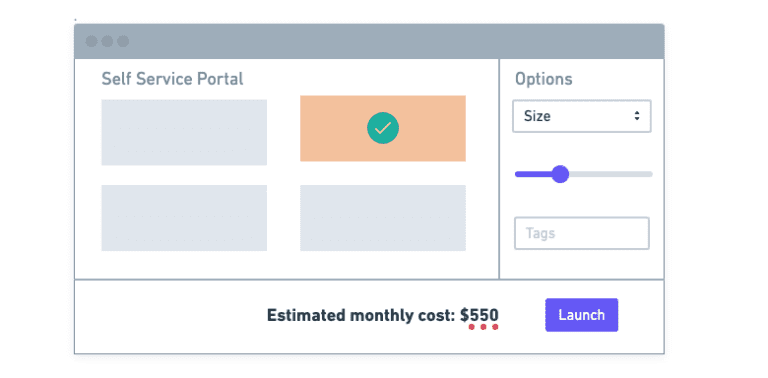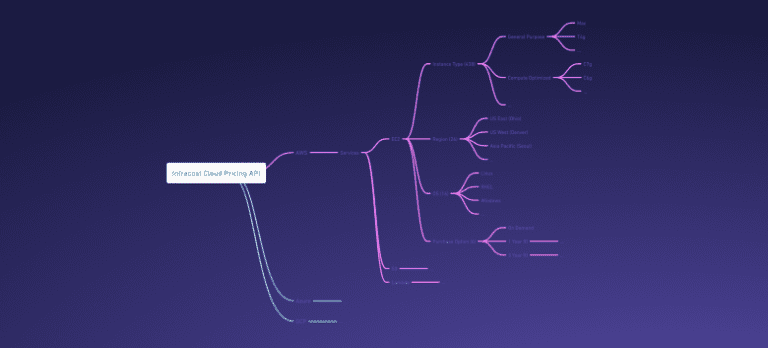The Best Cloud Cost Optimization Tools: Save Money on Your AWS, Azure, and GCP Bills
In 2023, cloud cost complexity kept increasing, and many new cloud cost management tools were launched. We also saw existing players launch new features and capabilities to help their customers reduce cloud costs, improve their cloud budget, and eliminate cloud waste.
The cloud providers released new capabilities, AWS Cost Explorer released a whole set of new features and capabilities, Azure Cost Management started integrating more data into their solution, and Google’s GCP added more recommendations and forecasting capabilities.
Everyone can see that navigating the intricate maze of cloud costs is complex. You’ve got resources spinning up and down every minute, a cloud bill that seems to grow each month, and a finance team wondering if there’s a way to bring these expenses under control.
How to Manage Cloud Costs?
Before we get into the tools that are going to help you with your cloud computing bills, let’s quickly cover the basics of how to manage cloud costs and the benefits of cloud cost management tools.
Recognize the Need for a Strategy
Cloud services offer great flexibility and scalability, enabling organizations to dynamically adjust resources as required. However, this flexibility will also increase costs if not managed effectively. By implementing a clear cloud cost management strategy, you can identify potential cost-saving opportunities, set budgetary guidelines, and monitor resource utilization. Mindlessly moving workloads to the cloud without considering the financial impact is a recipe for disaster.
The first step is to adopt an Infrastructure as Code (IaC) tool when managing cloud infrastructure. This will be the first step in your cloud management journey. There are also many tools in this space – the category to look at is a cloud management platform.
Adopt a Governance Model
FinOps is the future of cloud cost management. The FinOps foundation has created a great framework to help you navigate the cloud cost management space (read more: What is Cloud FinOps). One of the tasks you will need to address is adopting a governance model to control cloud costs and allocate resources more efficiently. Forming a team responsible for FinOps will help you set a cloud budget with cost allocation and cost analysis. This team will be your go-to resource for understanding cost anomalies when they happen and how to reduce costs.
Monitor, Analyze, Act
One of the first things you will need to manage cloud costs is to have basic monitoring in place. Basic monitoring and analysis can provide substantial insights into cloud usage and spending. The cloud providers have great tools for this and help you export cost management data into a format that can be digested into any other tool for further analysis. This will also export the metadata if you have used these, such as cost centers,
Once you have basic monitoring, you can analyze the data. This is the real cloud cost analysis: looking at unit costs at each cost center, at the usage data and the pricing structure being used, and looking for cost savings opportunities.
Then, it’s time to act to reduce costs. Shutting down idle resources to reduce unnecessary expenses, looking at over-provisioned resources, and looking for old instance types, volume types, etc., that are less performant and more expensive.
Leverage Automation
My final tip is that automation is your friend in cloud cost optimization. With automation, you can ensure that your engineers know the cost impact of their code changes before they ship to production. You can check for the best practices being followed directly in CI/CD. You can make sure all resources that are launched are tagged correctly. You can automate the spinning up and down of resources that are only needed at specific times of the day or week to reduce idle resources. You can also automatically change your saving programs to match your usage patterns.
How do you pick the best cloud cost management solutions?

First, Understand Your Needs
This is not a one-size-fits-all scenario. The best cloud cost management tool for you will depend on your needs, your organization size, your security requirements, the tool that you currently use, and what you are trying to achieve (e.g., cost allocation, auto-tagging, helping engineers take action, maximize savings of reserved instances, etc.).
Ensure the tool supports your cloud providers. You might be using a hybrid cloud with a mix of public clouds like AWS, Azure, Google, Oracle, etc. Ensure that the cloud monitoring tools support your setup.
Finally, the latest FinOps report showed that the best companies use a mixture of cloud cost management tools to help them with their cloud costs. The average number of tools being used was 4.
The Best Cloud Cost Management Tools of 2023
Infracost
Infracost differs greatly from all the other cloud cost management tools in this list. Infracost is shifting FinOps left and making it proactive. It sits in the engineer’s workflow (e.g., GitHub, GitLab, etc). Every time an engineer makes a code change, it tells them about the cost impact, scans it for FinOps tags to be present on all resources, and ensures the latest generation of cloud resources are being used. This is all done before any code is shipped to production. Over 3,000 companies are using it, and it is growing fast. Give it a try.
Cloud Provider native tools
GCP Billing – Google Cloud Cost Management Tool: Naturally tailored for Google Cloud Platform users, GCP Billing provides powerful analytics and recommendations to help you control your cloud spending efficiently.
Azure Cost Management + Billing: This native tool gives you robust capabilities for managing your MS Azure cost. It not only monitors but also recommends cost-saving measures. The Azure cost management product will be great if you only use Azure.
AWS Cost Explorer: Directly from the AWS console, this tool offers straightforward visualizations to understand your spending patterns. It is combined with other tools such as AWS Trusted Advisor, AWS Cloud Watch, and Resource Optimizer to help you manage your AWS costs.
Apptio Cloudability (now IBM)
It is one of the three oldest cloud cost management tools. Cloudability was launched in 2011 and acquired by Apptio in 2019. Apptio was then acquired by IBM in 2023. The product is very mature, covers many cloud providers, and offers services to larger enterprises. This also makes it one of the more expensive cost management products.
Flexera One
The second of the three oldest cloud cost management tools. The founders of Infracost are the same team that started the cloud cost management product that was acquired and integrated into the Flexera One product. Flexera One leans more towards IT Spend Management (ITSM). It covers public, private, hybrid cloud, and other IT spending categories.
CloudHealth Technology
The third oldest cloud cost management tool. This one has been renamed at least three times this year and is currently called VMware (by Broadcom) Tanzu CloudHealth. The product tries to break out past cloud cost management and get into configuration management and security.
CloudZero
One of the challengers to the old three, CloudZero, was launched in 2016. They offer cloud cost monitoring from IaaS cloud providers and SaaS, such as Confluent, Fastly, Heroku, and Amplitude.
CAST AI
Cast AI was launched in 2019 and is focused on Kubernetes workloads. It provides cloud cost management (visibility, right-sizing, reporting, etc.) and has started looking at providing security solutions for Kubernetes.
KubeCost
One of the other Kubernetes-focused cloud cost management tools. KubeCost is open source and helps with cost allocation by Kubernetes concepts such as namespaces, deployments, labels, etc. It also provides optimization insights and some governance controls.
Spot (by Netapp)
Spot got a foothold in the cloud cost management space by specializing in spot instances. If your application could run on Spot instances, then Spot would automatically bid and change your resources to ensure you will get the best price automatically. NetApp has acquired them and has expanded to address other costs and provide cost control.
CloudCheckr
This comprehensive cloud cost management platform provides cost allocation and chargeback features, making it easier for finance teams to allocate costs across various departments.
Vantage
Vantage is a new but quickly up-and-coming provider. They have been focused on self-service users with the ability to monitor and reduce their AWS, Azure, and GCP costs. They have been used in many startups and have started growing to serve enterprise users as well.
ProsperOps
ProsperOps automates AWS Reserved Instance management to realize the best possible savings. That’s their focus, and they are doing a great job. They automatically buy and sell Reservations to make sure as many reservations as possible cover your cloud usage. If those reservations are no longer needed, it will automatically sell them. Just a note: AWS recently announced some limitations around using RI optimizers, so we will have to see what happens with this service.
Azure Cloud Cost Management Solution
Specifically for Azure, a few companies have started to offer in-depth insights and recommendations for managing cloud costs. Given they only focus on Azure, I haven’t included them by name here. But they offer some cool features that only work on MS Azure.
Many others
Many others will help in cloud cost management via products, consultancy, or professional services. If you think we should include more providers, please get in touch.
Conclusion: Time to Take Action

The array of tools at your disposal for cloud cost management is vast, and the benefits of implementing them are even more remarkable. Pick the right ones according to your needs, and start reining in those cloud costs today.
Recommended Next Steps
- Evaluate your cloud environments and identify key cost drivers.
- Choose a cloud cost management tool that aligns with your strategy.
- Implement the tool and monitor its impact on your cloud spend.
The need for cloud cost optimization has never been more pressing. The right tools can be game-changers in managing and optimizing your cloud investments. Make your choice wisely, and your cloud bills will thank you.
Frequently Asked Questions (FAQs)
How Can I Get Started?
Start by evaluating your current cloud spend and understanding your cost drivers. Once you’ve grasped where your money is going, you can choose a cloud cost management tool that aligns with your needs.
What is Cloud Cost Management?
Cloud cost management involves the practices and tools for monitoring, analyzing, and optimizing the expenses incurred in a cloud environment. The goal is to maximize the return on cloud investments while minimizing waste.
How Do Cloud Cost Management Tools Work?
Cloud cost management tools collect data from your cloud service provider, analyze usage patterns, and provide insights or recommendations. They can automate specific tasks like shutting down idle instances or changing your instance types to suit your needs better.
Is Infracost a Good Tool for Cloud Cost Optimization?
Infracost is the only real proactive cloud cost management tool, shifting FinOps left. Infracost fits seamlessly into your engineering and DevOps workflow, providing real-time cost estimates to your engineers and FinOps teams before any code has been shipped or any money spent. This enables informed decision-making before deploying resources, helping to prevent unexpected costs.
Can One Tool Work Across Multiple Cloud Providers?
Some tools offer multi-cloud spend management, letting you manage costs across AWS, Azure, and Google Cloud. However, each cloud provider also has native tools that offer deep-dive functionalities specific to their services.
How Can I Identify Idle Resources?
Most cloud cost management tools offer resource monitoring features that flag idle or underutilized resources. You can then take action to remove or reconfigure these resources.
Do I Need Technical Expertise to Use These Tools?
While some tools are developer-focused, many are designed to be user-friendly and can be used effectively by finance teams, cloud architects, and business analysts alike.
What is the ROI of Cloud Cost Management Tools?
The ROI can vary depending on your cloud spend and how effectively you use the tool. However, most businesses find that the investment pays for itself quickly through reduced cloud expenses and more efficient resource allocation.
What is Cloud Governance?
Cloud governance is a framework that guides how you manage your cloud resources, aiming to align your cloud operations with your organizational goals. Effective governance can play a crucial role in cloud cost management.
How Do I Choose Between On-Demand and Reserved Instances?
On-demand instances offer flexibility but usually come at a higher cost. On the other hand, Reserved instances provide cost savings but require a longer-term commitment.
Feel free to reach out if you have more questions or need personalized advice on managing your cloud costs.







